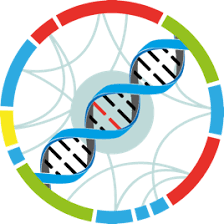Study : RNA seq analysis of CWS11x CWS74 F1hybrid of different Ecotype of Ashwagandha (Withania somnifera) genotypically adapted to specific environmental conditions
Identification
Name
RNA seq analysis of CWS11x CWS74 F1hybrid of different Ecotype of Ashwagandha (Withania somnifera) genotypically adapted to specific environmental conditions
Identifier
dXJuOkVWQS9zdHVkeS9QUkpOQTUxMTgxNQ==
Description
Ashwagandha (Withania somnifera) is the chief natural source of withanolides (steroidal lactones), with diverse pharmacological and therapeutic activities. The core germplasm of Ashwagandha at India primarily categorized as Annual, cultivated and wild perennial ecotypes exhibit diverse indigenous as well as naturalised phenotypic and phytochemical variability. These diverse ecotypes inter-cross freely, yielding new genetic substitution’s of morphotypes and chemotypes under specific spatial and temporal regulation of Withanolide biosynthesis. To understand the genotypic adaptational polymorphisms in the two ecotypes of Ashwagandha i.e the dwarf, yellow berry, annual type and tall, red berry perennial, Kashmiri type, for their different response to their specific niche environment RNA seq expression profiling of one month old glass house grown plant of CWS7xCWS11F1 hybrid of different ecotype of Ashwagandha (Withania somnifera) genotypically adapted to specific environmental conditions was performed using Illumina HiSeq 2000 NEXTflex Directional RNA-Seq (dUTP based) strand specific libraries yielding 23 million processed reads assembling in 60477 contigs of an average N50 of 1687. Transcriptome assembly was annotated against Uniprot Solanaceae , Viridiplantae and KEGG databases. Transcriptome assembled contigs generated 13632 SSR and 127121 SNPs. The F1 hybrid have 38746 and 38092 transcripts upregulated and down egulated with respect to recipient and 42330 and 42557 transcripts upregulated and down regulated with respect to donor.Ashwagandha (Withania somnifera) is the chief natural source of withanolides (steroidal lactones), with diverse pharmacological and therapeutic activities. The core germplasm of Ashwagandha at India primarily categorized as Annual, cultivated and wild perennial ecotypes exhibit diverse indigenous as well as naturalised phenotypic and phytochemical variability. These diverse ecotypes inter-cross freely, yielding new genetic substitution’s of morphotypes and chemotypes under specific spatial and temporal regulation of Withanolide biosynthesis. To understand the genotypic adaptational polymorphisms in the two ecotypes of Ashwagandha i.e the dwarf, yellow berry, annual type and tall, red berry perennial, Kashmiri type, for their different response to their specific niche environment RNA seq expression profiling of one month old glass house grown plant of CWS11xCWS7 F1 hybrid of different ecotype of Ashwagandha (Withania somnifera) genotypically adapted to specific environmental conditions was performed using Illumina HiSeq 2000 NEXTflex Directional RNA-Seq (dUTP based) strand specific libraries yielding 21 million processed reads assembling in 62926 contigs of an average N50 of 1512. Transcriptome assembly was annotated against Uniprot Solanaceae , Viridiplantae and KEGG databases. Transcriptome assembled contigs generated 15064 SSR and 134783 SNPs. The F1 hybrid have 47387 and 48031 transcripts upregulated and down regulated with respect to recipient and 46066 and 45552 transcripts upregulated and down regulated with respect to donor.Ashwagandha (Withania somnifera) is the chief natural source of withanolides (steroidal lactones), with diverse pharmacological and therapeutic activities. The core germplasm of Ashwagandha at India primarily categorized as Annual, cultivated and wild perennial ecotypes exhibit diverse indigenous as well as naturalised phenotypic and phytochemical variability. These diverse ecotypes inter-cross freely, yielding new genetic substitution’s of morphotypes and chemotypes under specific spatial and temporal regulation of Withanolide biosynthesis. To understand the genotypic adaptational polymorphisms in the two ecotypes of Ashwagandha i.e the dwarf, yellow berry, annual type and tall, red berry perennial, Kashmiri type, for their different response to their specific niche environment RNA seq expression profiling of one month old glass house grown plant of CWS7xCWS11F1 hybrid of different ecotype of Ashwagandha (Withania somnifera) genotypically adapted to specific environmental conditions was performed using Illumina HiSeq 2000 NEXTflex Directional RNA-Seq (dUTP based) strand specific libraries yielding 18 million processed reads assembling in 62701 contigs of an average N50 of 1760. Transcriptome assembly was annotated against Uniprot Solanaceae, Viridiplantae and KEGG databases. Transcriptome assembled contigs generated 13997 SSR and 111055 SNPs. The F1 hybrid have 41899 and 40680 transcripts upregulated and down regulated with respect to recipient.
Data files
Genotype
| Accession number | Name | Taxon |
|---|
